This was published 1 year ago
‘Wealthy families, private schools’: Have universities forgotten who their students really are?
By Sherryn Groch, Lucy Carroll and Nicole Precel
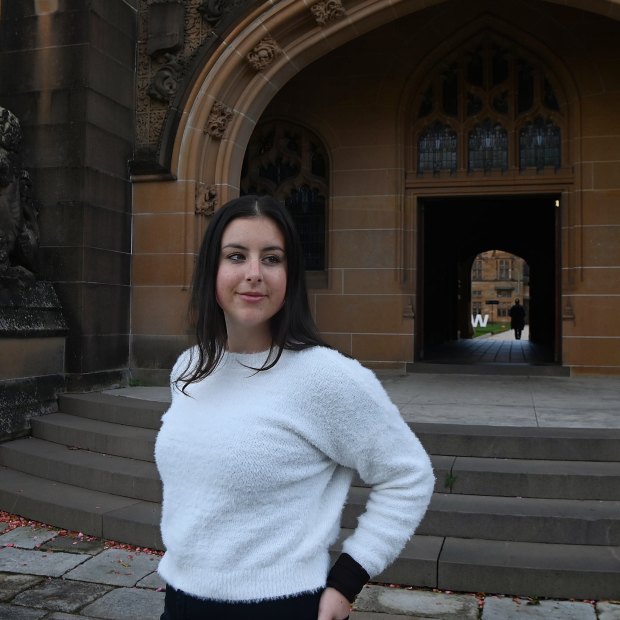
Maddi Eveleigh started working at 14 part-time in her small town to help pay for university in Sydney.Credit: Kate Geraghty
Hundreds of kilometres separate the small coastal town where Maddi Eveleigh grew up from the university campus where she will eventually complete two degrees.
“The idea of uni was always in the back of my mind. But I worried that I wouldn’t be good enough … and how I’d afford it,” she says. None of “the big city unis ever came to talk to us during high school”.
After graduating from Moruya High School on NSW’s South Coast , Eveleigh became the first in her family to go to university – scoring a spot in the University of Sydney’s prestigious science and medicine programs.
But taking her place at the sandstone institution meant some tough financial choices. A modest scholarship helped, as did savings squirrelled away from years of after-school work. “Most of the students in my course come from wealthy families, private schools. That’s the vibe in medicine.”
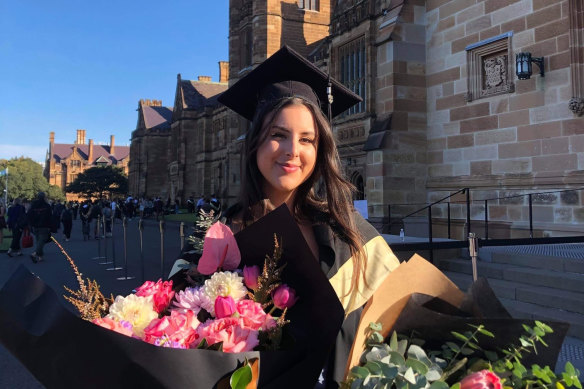
Maddi Eveleigh was the first in her family to go to university.
Universities are engines of the economy, producing the research and workforce that help grow GDP. But the idea of who universities are for needs to change, says federal Education Minister Jason Clare. More than half of all jobs in Australia will need higher education qualifications by 2050, compared with 36 per cent today, according to analysis released this week in the interim report of the landmark accord review of universities. That means about twice as many people will need to go to university – including students from low socioeconomic backgrounds and the regions who typically haven’t considered tertiary education as an option.
Yet the higher education sector itself is in crisis, propped up by international student fees after decades of government funding cuts, with a heavily casualised workforce and, increasingly, experts say, an excessively corporatised executive. Some warn Australian universities have lost sight of students in their scramble to stay competitive with elite institutions around the world.
To succeed, they’ve had to get bigger. The rise of the homogenous mega-university means institutions are becoming more like “supermarkets for credentials” at the cost of specialisation, according to RMIT University’s principal adviser in institutional research, Angel Calderon.
The days of university as a transformational experience are fading, says Xavier Dupe of the National Student Union. “And it started before COVID. Universities are pushing students through a degree factory and increasingly gearing study around the priorities of big business.”
What’s needed, everyone agrees, is a complete overhaul.
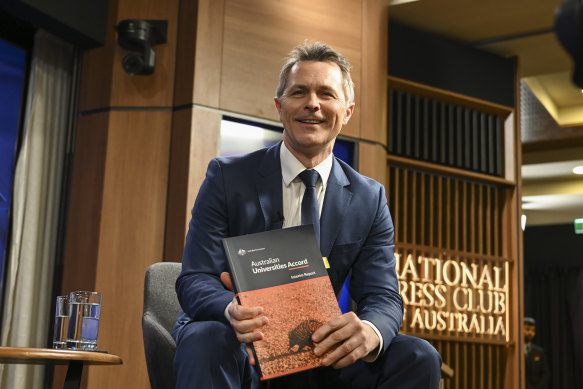
Education Minister Jason Clare this week unveiled the accord’s interim report on Australian universities.Credit: Martin Ollman
Big ‘spiky’ change
The accord’s interim report lays out five priority moves to jumpstart reforms: all Indigenous students will be guaranteed a Commonwealth-supported university place when they are accepted for study; 34 new study hubs will be established in outer suburbs and regional areas; and university governing boards will be overhauled to install more people with higher education experience. A key part of the former Coalition government’s controversial Job Ready Graduates Package – which was lashed by the accord panel as disadvantaging poorer students – will be dismantled, meaning students who fail more than 50 per cent of subjects will no longer lose their Commonwealth place. And government funding agreements, which had only been guaranteed until the end of this year, will be extended into 2025.
But radical reform calls for radical ideas, says Clare, and the accord panel has also laid out a raft of “big spiky” ones that could shape the sector’s next steps ahead of its final report in December. “That’s why there’s an echidna on the front cover,” Clare quipped as the report was handed down.
The review comes at a time when NSW and Victorian universities are almost universally in deficit. The exception is the University of Sydney, which has reported an operating surplus of $1.3 billion over the past two years.
The next six months, says higher education expert Andrew Norton, is where the debate could get divisive. Some ideas flagged are especially spiky, including a proposed levy on the almost $10 billion universities make annually from international student fees, that could be used to cover gaps elsewhere such as research funding and student housing. Group of Eight universities that earn the most from international students have already slammed the idea as a tax on high-achieving institutions, even as many regional institutions voice interest.
University of Melbourne vice-chancellor Professor Duncan Maskell questions how such a levy could be fairly applied. “It costs us a lot of money to attract international students, we then use a big chunk of their fees on teaching them or building infrastructure for them,” he says. “By the time you factor all that in, there wouldn’t be much left to tax.”
Still, La Trobe University vice-chancellor Professor John Dewar says the levy idea has “a lot of merit”. The sheer scale of the changes needed demands bold moves, he says, welcoming the accord panel’s willingness to “pressure test and wargame” such ideas now to avoid unintended consequences later. For example, “a levy could lead to the cost being passed onto the students and that’d be a shame”, he says. “It already costs a lot to come here and study.”
Norton says the levy could reinforce the perception of international students as cash cows and potentially drive away a key source of revenue for the sector. What’s clear though is that there is a resource divide between many universities and, according to the accord, universities are incentivised to maximise their international student cohort, blowing out class sizes. “This can be detrimental to the student experience,” the report says.
Rich university, poor university
Reforms down the years have tried to close the equity gap and failed. Now, the accord panel says, reaching parity requires 60 per cent more students from low socio-economic backgrounds going to university, 53 per cent more from regional areas and about 11 per cent more First Nations students.
If we’re going to get there, Dewar says, “we need to pull every lever. We haven’t really had a plan for higher education in this country. We need targets.”
Clare, who is also plotting big reforms in early education and schools, says students are being failed before they reach university. Those from poorer backgrounds are three times more likely to fall behind in school and only 15 per cent go on to get degrees. “Six years ago, 83 per cent of students in public schools finished year 12,” he told the Press Club this week. “Last year it was 76 per cent. And all of this is happening at a time when finishing school is so much more important than it was in my mum and dad’s day, or mine ... If you’re a young Indigenous bloke today, you’re more likely to go to jail than university.”
These grim figures are why Norton still sees reaching equal university participation as a “pipedream” until school results and year 12 completion rates go up. In NSW, one in three public school students are now dropping out of school. “We should be realistic about what’s achievable,” says Norton.
Equity targets have been missed before, concedes Dewar, but he senses a real momentum in the sector this time, something he hopes is matched by more serious funding and policy. An independent tertiary commission to guide the reform, another spiky idea flagged by the accord, may well be needed given the amount of taxpayer money involved. “They need to hold universities accountable for targets,” says Dewar. “They need to assure the taxpayer that the results are worth it. In a busy world, no matter how much appetite the sector might have to do something, and it does have the appetite, if you’re not actually going to have your feet held to the fire over it, then it may slip.”
A second national university, this time focusing on the regions and based on the University of California model, is another idea flagged worth a discussion, Dewar says. “Under the UC model, their campuses all have a degree of autonomy, and are big unis in their own right, but they benefit from some aggregation of function that are expensive for each university to run separately.” Others question whether a federated model is needed.
Clare has said Australia would likely need more universities and new kinds of institutions, including more specialised models, to cater to the coming demand.
Swinburne University head of Indigenous engagement John Evans welcomes more places for Indigenous students but stresses they must come with more wrap-around support, including allowing students who leave university to return. “We shouldn’t shun people who maybe don’t make it the first time,” he says. Specialist Indigenous residential halls, like the University of Technology Sydney is now building, could also help students moving to the big city for the first time.
Palawa woman Anneka Wells had to leave Tasmania for the mainland to study wildlife conservation after high school. “I’d been raised on a little quarter acre of land with my mum and grandparents my whole life,” she says. “They didn’t offer anything I wanted to study back home.”
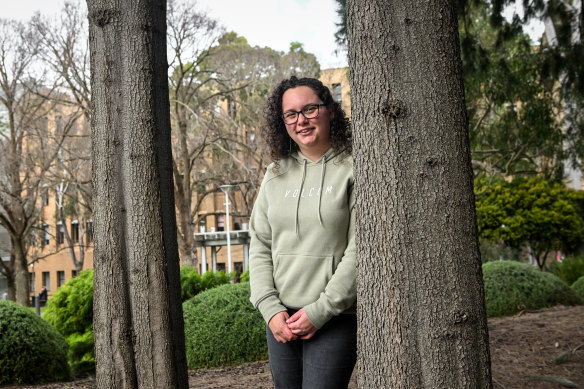
Palawa woman Anneka Wells is studying wildlife conservation and biology at La Trobe University.Credit: Justin McManus
Now in her second year at La Trobe, she hosts Indigenous high schoolers from regional Victoria and Darwin, giving them a taste of life on campus in Bundoora through a university mentorship program. “It’s so fun,” Wells says. “They can ask all those burning questions they have. It’s like year 7 camp, getting to know everyone.” Still, she knows it’s not easy making the move. Her mother relocated with her to help with rent in Melbourne. “Student housing is just insanely expensive.”
For all the talk of cost-of-living pressures driving students into poverty and sometimes even homelessness, Norton and Dupe note the absence of any big ideas in the accord like subsidising student housing, capping rent or increasing student welfare payments.
“Universities have sold off a lot of their housing to private providers who charge for tiny shoebox apartments,” Dupe says. “Sometimes on-campus living is more expensive than even the private rental market.”
Dewar agrees the minister’s reforms need to go beyond the campus. “We know a lot of our students either don’t come or drop out because they can’t afford it.“ Meanwhile, it’s up to individual universities to offer scholarships and living expenses or to discount fees. “And there’s no incentive to do that built-in,” Dewar says. There’s also very little to support students expected to complete unpaid work placements, say for teaching and nursing degrees.
The Coalition’s controversial decision to slash the price of degrees considered in demand by industry, such as nursing, and raise the price of law, arts and humanities study, hasn’t been immediately scrapped, despite Clare conceding “the scheme has failed” to shift student choice. Though changes to it have been flagged, students will be stuck paying off higher debt for now.
Maskell says: “If we’re going to have an equitable system, then we need funding that doesn’t advantage or disadvantage young people based on what they want to do.” University is about more than developing one specific skill set. Graduates need to be well-rounded to adapt to a changing labour market. “And it’s a massive misconception that humanities don’t give you a useful education,” he says. “If that was true most of our captains of industry wouldn’t be there.” While the needs of industry are important, Maskell says it’s important “we don’t swing too far over” and lose track of the place of universities in student life and the wider community.
The accord has also flagged a broader look at the HECS model of student debt – which this year had a record indexation hike of 7.1 per cent push up debts by more than $1000. Says Dupe: “Many students have more debt today than they graduated with despite making payments.”
So, is it really worth going to university?
Clare lays out a simple calculation: The average student debt is about $24,000, and the average salary for those with a university degree is $100,000 versus $70,000 for those who stop studying after Year 12. “That’s a big difference, 30 grand a year, every year.”
‘We know a lot of our students either don’t come or drop out because they can’t afford it.’
Latrobe University vice-chancellor Professor John Dewar
But Norton is not convinced by the urgent need to push more students into university that the accord presents. He thinks that’s more aligned with the interests of industry than student needs. “Over the past few decades it’s been expected that middle-class people go to university and that this should be the society-wide norm,” he says. “We need a system that evolves in line with student preferences and what’s going on in the real world. But this idea that we can say now how many graduates we need in 2050 is ridiculous.”
The accord itself notes at times “intense student disappointment” in teaching at university, stressing the need for universities to focus beyond research, which Norton says has been their priority.
Meanwhile, many experts have voiced concern that research funding was not among the accord’s priorities for immediate action. Government funding for Australian research tracks below other similar nations and, the accord notes, is now “underwritten by international student revenue”, creating an “unacceptable risk to the future”.
Higher education expert Gwilym Croucher says “Australian universities have been the victims of their own success in attracting international students” that have propped up research, meaning “governments haven’t had to make hard decisions about it”.
Oxford Professor of higher education Simon Marginson, who previously worked at the University of Melbourne, says that despite Australia’s shaky research funding arrangements, it’s become “fully competitive with the US and UK. That’s like reaching a record gold medal haul in athletics and swimming at the Olympics”, he says. “But that funding basis is unsustainable.” Still, “an intelligent [Labor] minister who seems to be in it for the long haul” may take the opportunity to cement a long-term public funding base” which is behind “the stellar … research performance of the US, Europe and China”.
Many, including Nobel-Prize-winning astrophysicist and ANU vice-chancellor Brian Schmidt, argue that Australia needs a sovereign research capability too. Yet the accord says public sources “cannot realistically” replace the current rivers of gold from international student fees.
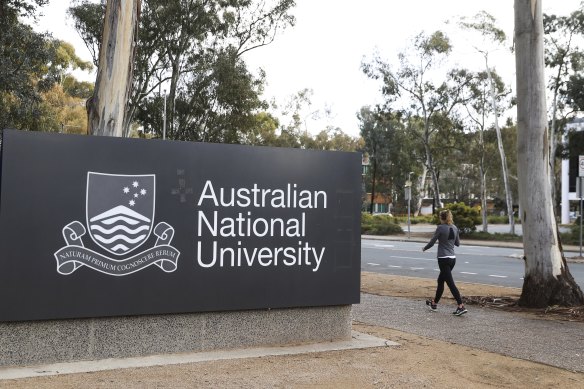
Students say the days of university as a transformational experience are fading.Credit: Alex Ellinghausen
Dewar sighs at the “brutal mathematics” of the current model. “For every dollar a university spends on research here, the government only funds 19 cents ...So to have the resources to do the research that the government doesn’t fund properly, you have to cross-subsidise from other revenue and that’s mostly international students,” he says. “And to attract them you have to be good in the rankings which means you have to do more research.”
That breeds mega-universities. “Oxford and Harvard would be considered small, regional unis here,” he says. “A Monash or Melbourne are four times the size. They’re like the Ram trucks of higher education, and they have to be to compete.”
At the Australia Institute, Jim Stanford says the accord has sent universities a reminder that they are public institutions. Recently, leadership in the sector has been stacked with corporate types “acting like CEOS themselves, right down to the outrageous amounts they get paid”, he says.
Detail on how university councils will be rebalanced with higher education experts is scant, and will be left to the states for the most part, “a cop out”, says Stanford. It’s also unclear how the government will take steps to ensure universities “are good employers” and prioritise student and staff safety, though the accord notes wage theft scandals and widespread sexual assault on campus must be addressed.
Dewar agrees university boards need a refresh with more academics. “I don’t think there are many sectors where governing bodies aren’t [significantly] made up of people with expertise in that area.” Maskell is not opposed either, but notes one big spiky idea missing in the accord is the question of returning to the era of free university education itself, which ran for 14 years from 1974 under Gough Whitlam. The Melbourne vice-chancellor argues it’s at least worthy of debate, though concedes he’s in the minority in Australia.
Of the accord’s ideas, Maskell is heartened by the conversation they’ve already sparked. “Of course, all of this costs money. But if we’re talking about a once-in-a-lifetime reform, then the baseline for government funding can’t be [now] because funding has been cut so dramatically over the last few years. I know [I’m] another VC saying we need more money, but it’s true.”
Eveleigh knows the value true equity reform at universities will deliver. Students from the bush bring much to city, and then often take key skills back home. “It goes far beyond entry marks and scores. We have the potential to thrive just like any other student,” she says, but many will need help getting in the door.
In Melbourne, Wells has already changed career paths from veterinary science to zookeeping. She hadn’t heard about the accord reforms until this week but is excited to think more Indigenous students like her will have the chance to see where a university degree could take them. And her favourite animal? “The spiky echidna, of course!”
The Morning Edition newsletter is our guide to the day’s most important and interesting stories, analysis and insights. Sign up here.